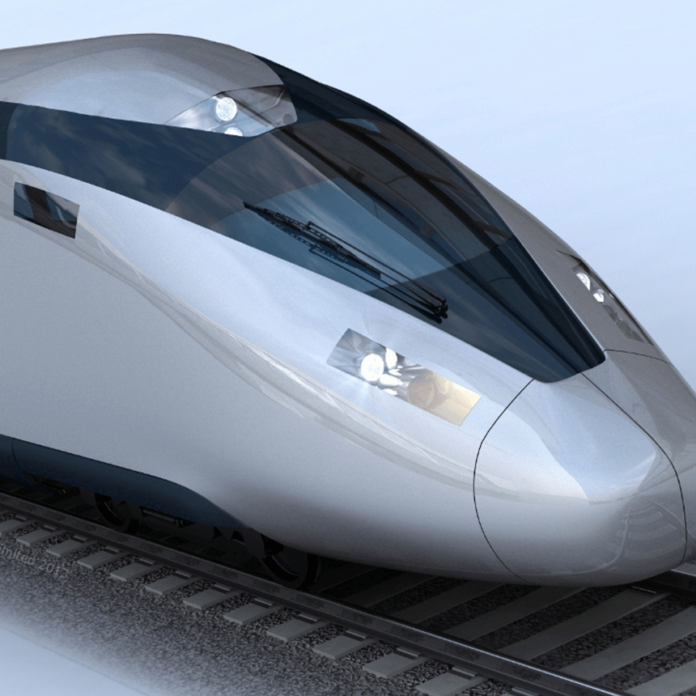Three huge disused yellow container cranes at Willesden, west London have been removed to make way for a major new HS2 Rail Logistics Hub to support the construction of the new high-speed line’s London tunnels.
The 22 metre high cranes, weighing up to 290 tonnes, have stood above the track next to the busy west coast mainline for almost 30 years. Each one had to be lifted up and moved 100 metres to the side, so they could be safely dismantled away from passing trains.
The removal of the 3 cranes was one of the most complex engineering challenges the project has faced so far, requiring thousands of hours of planning and preparation.
Once complete, 16 freight trains a day are expected to serve the planned Rail Logistics Hub, delivering equipment and construction materials and taking out material excavated by the tunnel boring machines digging the tunnels east to Euston and west to the outskirts of the capital.
In total, the vast 150,000 square-metre rail hub is expected to process more than 6 million tonnes of excavated material, the equivalent of taking 300,000 HGVs off the roads.
Welcoming the progress, HS2 Project Director, Colin Thomas, said: “Once up and running, the Rail Logistics Hub will be the beating heart of our construction activity in the capital, enabling us to deliver equipment and materials and take out huge amounts of excavated material by rail.
“The safe and efficient removal of the Willesden cranes is the first step to making that possible, and a very visible reminder of the progress we are making in the delivery of Britain’s new high speed line.”
HS2’s enabling works contractor, a Costain Skanska joint venture (CSjv), working with JF Hunt Ltd (Demolitions) and ALE Heavy Lift used a mobile crane, itself weighing 550 tonnes, to move the first 2 container cranes last year.
The third, and heaviest of the container cranes, was moved by the same team over the Christmas break using a specialist moving motorised jacking system. It was brought down to ground level on the 6th February, in a controlled collapse.
After weakening the structure of the crane, the team used a 49 ton excavator to pull the whole thing down onto specially built crash matts. This crane has now been disassembled at ground level, with 95% of the structure set to be recycled.
Neal Carter, PMO Director at Costain Skanska Joint Venture (Csjv), said: “Costain and Skanska are making strong progress in preparing the area between Euston and the Colne Valley for the new HS2 route. The demolition of the third and largest crane marks the high point of a busy 12 months on site at Willesden.
“Our thanks goes to the whole team who safely delivered this challenging piece of work, including working over Christmas Day to move a crane so that no rail customers were disrupted.”
Originally known as Willesden Euro Terminal, the site was built to handle container traffic through the Channel Tunnel. The first scheduled freight train to cross the channel departed from Willesden on 27th June 1994, 4 months before the first Eurostar.
A fourth container crane, at the north-west end of the site, will be left in position.
The work is part of HS2’s early works programme, with more than 1,000 people at work across London, clearing the way for the start of construction. At Euston, demolitions are well underway alongside the project’s pioneering archaeology programme, while clearance of Washwood Heath, site of the project’s future rolling stock depot, is also in full swing.
Work to clear the concrete slab covering the site of the new Birmingham Curzon Street station is also underway. In total more than 7,000 jobs are supported by the HS2 project, both directly and in the UK-wide supply chain.



































 0113 2082620
0113 2082620 info@railbusinessdaily.com
info@railbusinessdaily.com 15 Mariner Court, Wakefield WF4 3FL
15 Mariner Court, Wakefield WF4 3FL

